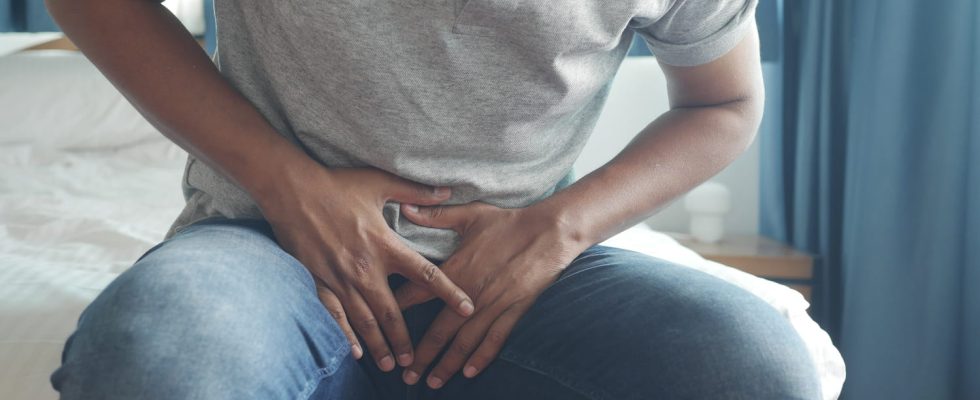Be careful, gentlemen, not to neglect this sign which has persisted for several days and is bothering you. He may be hiding a prostate problem. Especially if you are over 45…
There prostate is a gland of themale reproductive systemlocated under the bladder, in front of the rectum. Its main role is to produce prostate fluidrich in enzymes, proteins and minerals that help protect and nourish sperm. From 45-50 years old, it is advisable to do monitor your prostate and to consult your doctor in case of abnormal symptom. These symptoms may indicate a adenoma prostate (also called “benign prostatic hypertrophy”) or a prostatitis (inflammation of the prostate). At a more advanced stage, cancer.
1. A frequent need to urinate (at night)
A frequent need to urinate (medically called “pollakiuria”), especially when it occurs night, can reveal a problem with the prostate. “The adenoma of the prostate, a benign tumor which corresponds to theenlargement of the prostatemay have an impact on urinary functionwhich will cause urinary problems and discomfort (frequent need to urinate with small amounts of urine each time, weak urinary stream or need to “push” to urinate, feeling of not having completely emptied your bladder, editor’s note), explains Professor Aurel Messas, surgeon-urologist at the American Hospital in Paris. This is a disease quite frequent. Among men aged 50 and over, almost 80% of them anatomically have an adenoma. But not everyone will have problems or symptoms linked to this prostate adenoma. Also, one in two patients will need drug treatment to resolve their urinary problems.“. In the event of urinary problems, consult the general practitioner or one urologist.
2. Erection problems
Erection problems can be a sign of a prostate adenoma but it is far from being systematic. “As soon as we talk about the prostate, the patient appears fear that the treatments will affect his ability to have erections and therefore a fulfilled sexuality. However, as a reminder, currently, we are arriving to avoid in the vast majority of cases these disorders” reassures Professor Messas.
3. Urinary leakage
Urinary incontinence can be the consequence of a prostate adenoma because an enlarged prostate can put pressure on the urethra and cause leaks. On the other hand “If a patient has urinary problems, there is very little chance that it is linked to cancer. Indeed, It’s starting to become quite rare in France to discover cancer at the stage where it causes urinary problems. This is thanks to cancer screening by blood sampling from the PSA. It makes it possible to detect cancer years before it causes the slightest symptom. We explains Professor Messas.
4. Burning when urinating
A burning sensation in the lower abdomen or when urinating may be a sign of prostatitis, which corresponds to painful inflammation of the prostate and can be linked to a bacterial infection. You should talk to your doctor without delay.
5. Pelvic pain
In the same way, pain felt in the pelvic area (small pelvis) or in the lumbar region, penis or testicles may be indicative ofprostatitis. This pain may be characterized by painful urination, discomfort in the genitals or a feeling of pressure in the rectum. Prostatitis should be the subject of a consultation with a doctor who can prescribe medication (in addition to antibiotics if the prostatitis is of bacterial origin) to relieve pain.
6. Blood-tinted urine
The presence of blood in the urine (hematuria in medical language) can be indicative ofprostatitis or prostate adenoma (more rarely). Although we should not be alarmed in the majority of cases, bloody urine, whether occasional or repeated, is not not trivial. If there is blood in the urine, it is appropriate totalk to your general practitioner or urologist who can perform a urine analysis, imaging of the urinary system in order to visualize the kidneys and ureters and, if necessary, a cystoscopy, a medical examination allowing the internal wall of the bladder to be studied in order to detect possible anomalies.
Thanks to Professor Aurel Messas, surgeon-urologist at the American Hospital of Paris.





